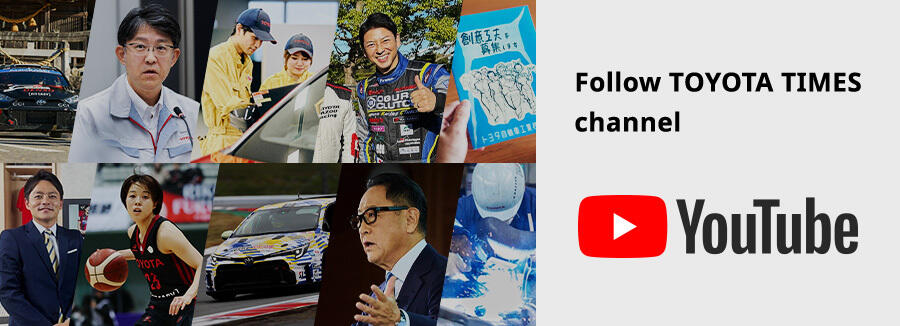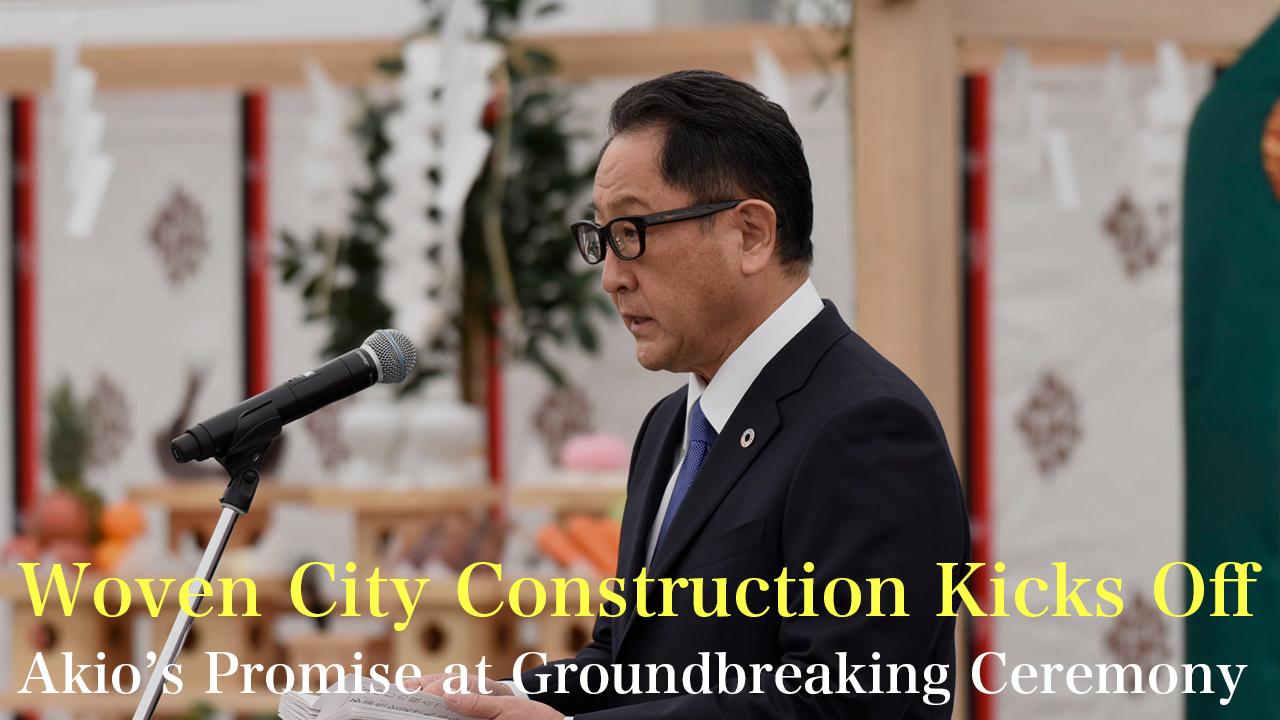
Woven City has taken off on Feb. 23, so-called "Mt. Fuji Day" in Japan! At the groundbreaking ceremony, Akio made one promise on what to embrace in advancing the project.

On February 23, Woven City, a prototype city of the future initiated by Toyota, marked the start of its construction.
A groundbreaking ceremony was held in the morning at the old vehicle yard adjacent to the former Higashi-Fuji Plant of Toyota Motor East Japan (TMEJ), located at the base of Mount Fuji, to pray for the safe construction of the city.
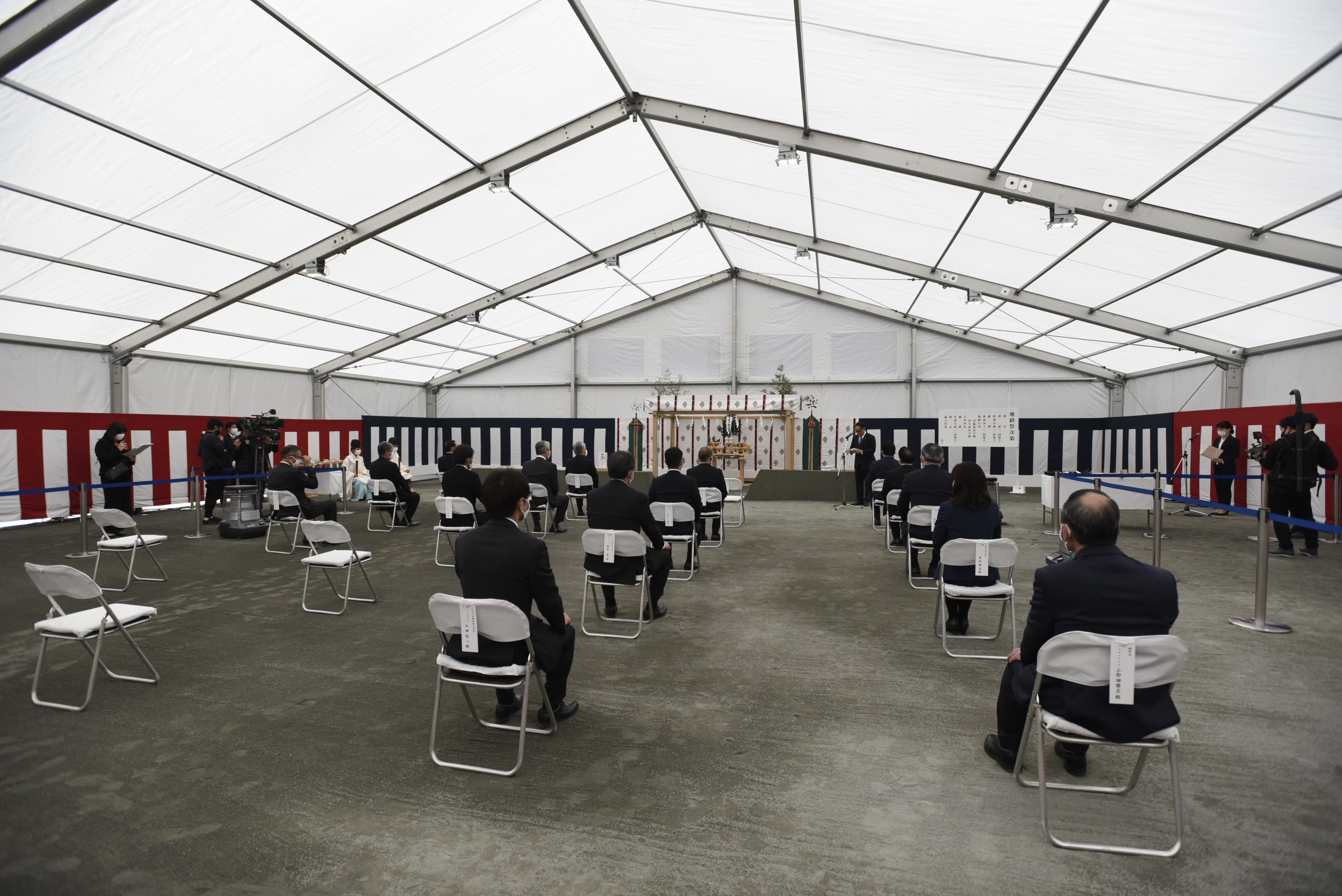
One year has passed since Akio announced this project at CES in Las Vegas in January 2020.
After the announcement, the COVID-19 pandemic started to slow down the world, including people’s daily lives and the economy. Nonetheless, the Woven City project proceeded as planned and reached a milestone of starting construction without any delay.
The ceremony was conducted with invited guests, which included municipal representatives such as Heita Kawakatsu, Governor of Shizuoka Prefecture and Kenji Takamura, Mayor of Susono City, as well as TMEJ president Kazuhiro Miyauchi, and executives from suppliers located within the area.
Akio made one promise in the remarks he gave as the host.
In fact, Akio has made some promises in other occasions since the idea of Woven City was born.
Although his remarks was a brief one of about three minutes in length, it reminded Toyota members of the previous occasions when he made those promises.
Higashi-Fuji Plant Ends its 53-Year History
Akio Toyoda remarks
Today, as we hold a groundbreaking ceremony, I would like to express my appreciation to the people of Susono City, Shizuoka Prefecture, and other local communities, as well as our construction partners, who have given us tremendous support for the Woven City project.
It is not easy to proceed with things as planned under the COVID-19 pandemic. I would like to extend my deepest gratitude to all those involved in the project for their hard efforts to make this happen.
On December 9, 2020, the Higashi-Fuji Plant of Toyota Motor East Japan (TMEJ) drew its history to a close, after 53 years of producing vehicles with the support of the community.
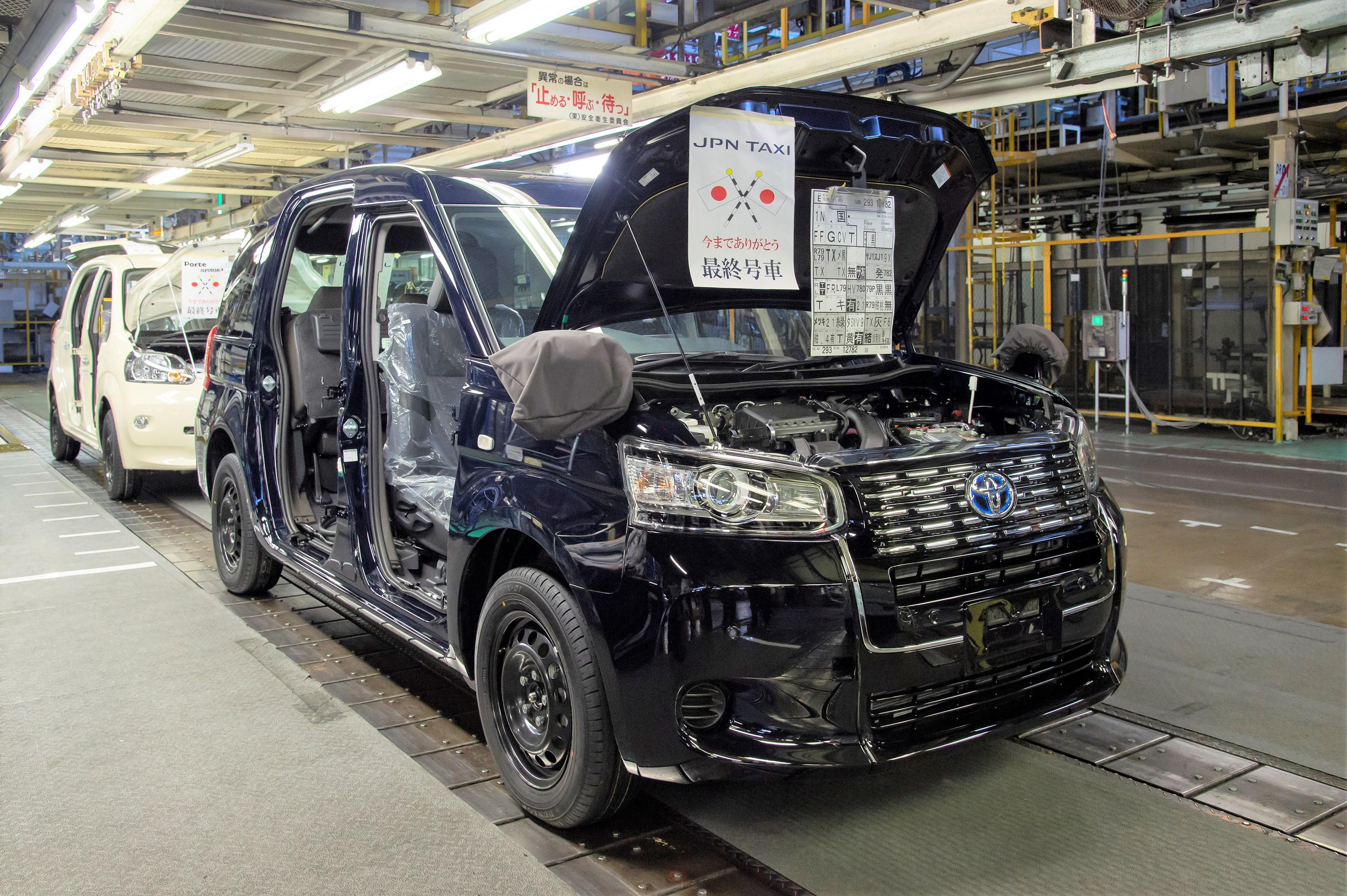
In total, 7,000 members have worked here at the plant. This means that plant members have left as many as 14 million footprints in this place every day.
We have produced 7.52 million vehicles, in great variety, from the Toyota Century to JPN Taxi.
I believe the plant had been a driving force for motorization in Japan, supporting people’s daily lives and promoting a car culture.
The history of the Higashi-Fuji Plant dates back to the 1960s when Japan had experienced a rapid wave of motorization. In response to the needs of testing vehicles under high-speed driving environments, Toyota decided to locate its new R&D facility in Higashi-Fuji, which had a vast space of land available for vehicle development.
The Higashi-Fuji Workshop was established in a corner of the facility, where Kanto Auto Works (that formed TMEJ with Central Motor and Toyota Motor Tohoku in 2012) started production of vehicles in 1967 in the form of onsite outsourcing.
In 1968, Kanto Auto Works finished constructing the Higashi-Fuji Plant in the same Toyota facility. It was a huge investment for the company. To start the operation of the plant, as many as 1,000 skilled members were transferred from their headquarters and plant in Yokosuka, Kanagawa Prefecture (a neighboring prefecture of Shizuoka).
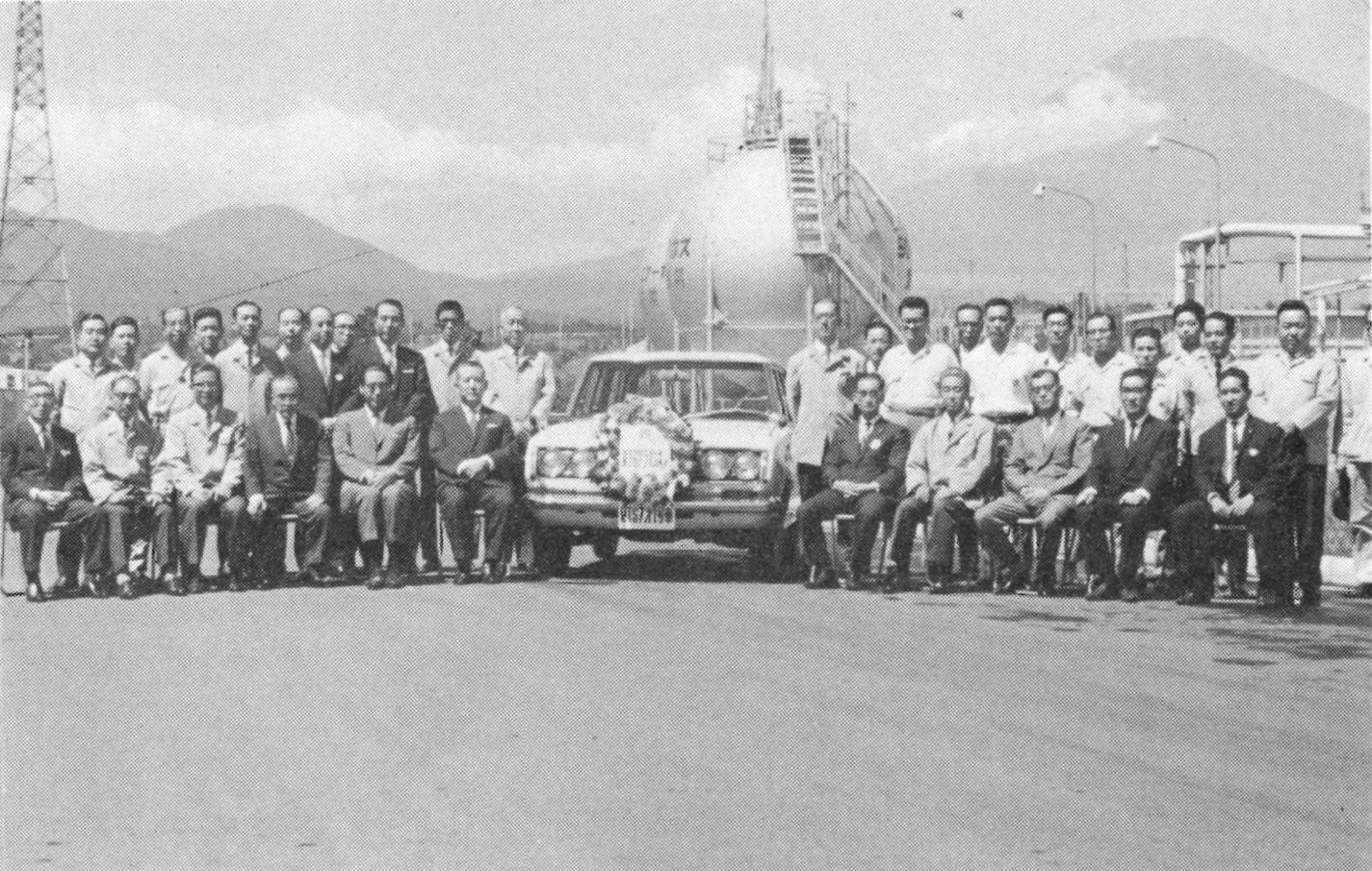
In the late 1980s, the number of vehicle production rapidly increased in response to the growing car sales in Japan. The plant contributed to the growth of Toyota and Japan’s motorization.
At its peak, 2,000 members worked at the plant, and 7,000 members in total came to make vehicles. They made reliable cars such as the Toyota Century, Toyota’s flagship chauffeur car, and the JPN Taxi, a car that requires a high level of durability.
Weaving the Plant’s History into Woven City’s Future
During his remarks, Akio touched on the DNA of the Higashi-Fuji Plant, followed by the promise he made.
Akio Toyoda remarks
The DNA of the Higashi-Fuji Plant: It is the spirit of kaizen (continuous improvement), an attitude of working for others, or the “YOU perspective” as I call it, and the heart of embracing diversity and inclusion.
These are inherited as the three unwavering principles of Woven City; "Human-Centered," "A Living Laboratory," and "Ever Evolving City."
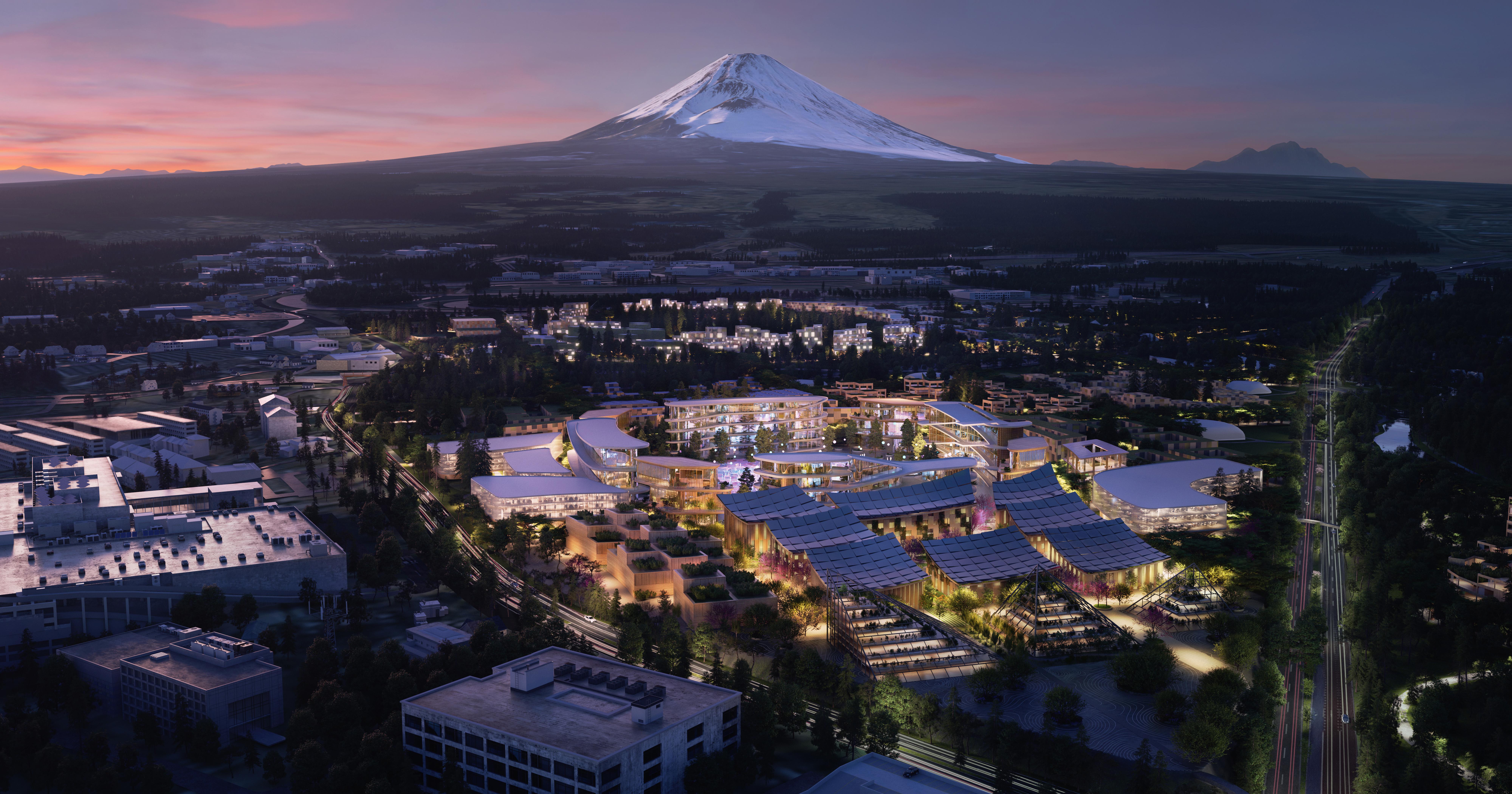
“We want to weave the history of Higashi-Fuji Plant into the future of this town.”
“We want to be a best-in-town company that people in the local community love and rely upon.”
This is the aspiration that all of us at Toyota would like to carry on.
I would like to conclude my remarks by promising that, always keeping this aspiration in mind, we will continue to take every step forward into the future together with everyone in the community.
Promise Made to Higashi-Fuji Plant Members
In July 2018, Akio was at the Higashi-Fuji Plant to talk directly with the plant members.
One member asked a question as follows:
Plant member
I want to go to the Tohoku area and help make cars there. But some people may have no choice but to quit because they can’t take their family to Tohoku even if they want to go.
When I think of such people, I’m not sure if I feel happy about going to Tohoku.
What is the future of this place after the plant is shut down? I want to know what you are thinking at this time.
In an emotional tone, he asked this question, thinking about other colleagues, rather than himself. Akio responded:
Akio
I am thinking of transforming this place into a Connected City, a large-scale demonstration experiment for autonomous driving among other things, a place that can contribute to the future of automobiles for the next 50 years.
This is still at a conceptual stage, but I think if we have the will, we can make it happen.
At that time, it was just Akio’s personal idea, not something approved by the company. But as Akio recalled, he couldn’t resist making the promise first to the members “who think of others.”
There was another promise made at the closing ceremony held in December 2020. In commemorating the final day of the plant, Akio said the following in his video message.
Akio
At Woven City, we will try various new things to bring happiness to people.
There is one promise that I made with James Kuffner and his team members, which is to make this city always human-centered.
Woven City is going to be built not on a vacant lot, but on the place and history you have woven into the future.
The value and spirit you have passed on, of always thinking about others and their feelings first and most, will be inherited by all members in developing the city. That is a promise I want to make to you.
Woven City, built on the Higashi-Fuji Plant that made a great contribution to Toyota, communities and the automotive industry, has opened a new chapter of the land, with a promise to weave the plant’s spirit and history into the future.

